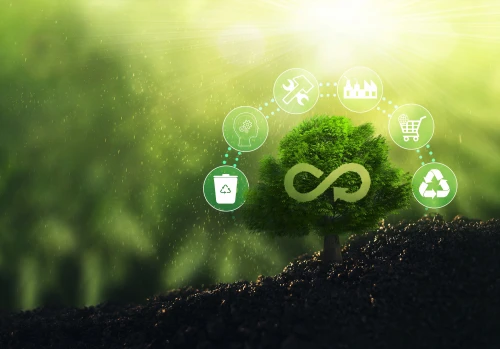
April 30th, 2025
Join our Italian Energy Day on 20 May – Book now
LTPO (Long-Term Power Outlook) is important for strategic energy planning over extended periods.

LTPO (Long-Term Power Outlook), is an important tool to help energy professionals, policymakers, and businesses take a strategic approach to forecasting energy demand, supply, and sustainability over extended periods.
We explain the importance of LTPO, its importance, applications, and future trends.
LTPO, or Long-Term Power Outlook, refers to the analysis and forecasting of energy needs and resources over an extended time frame, typically ranging from 10 to 50 years. This strategic approach helps governments, utilities, and private enterprises make informed decisions about infrastructure investments, regulatory policies, and energy production strategies.
The goal of LTPO is to provide a clear roadmap that aligns energy demand with sustainable and cost-effective supply options, ensuring long-term reliability and efficiency. It involves analysing historical data, current market trends, technological advancements, and environmental considerations to predict future energy requirements.
Energy systems are complex and influenced by various factors, including economic growth, technological progress, regulatory frameworks, and environmental concerns. LTPO plays a critical role in addressing these complexities by:
By forecasting future demand and supply, LTPO helps prevent energy shortages and ensures uninterrupted power availability.
It aids in the transition to renewable energy sources, helping stakeholders align with carbon neutrality and net-zero targets.
LTPO allows organisations to allocate resources efficiently and make cost-effective investments in energy infrastructure.
It assists governments and energy providers in aligning with national and international energy policies and environmental regulations.
A comprehensive LTPO strategy involves several key factors that contribute to its effectiveness. These include:
Understanding historical energy consumption patterns, economic indicators, and demographic shifts is vital for creating accurate long-term projections.
Innovations in energy storage, grid modernisation, and renewable technologies significantly impact power generation and distribution forecasts.
Changes in government policies, carbon emission targets, and environmental regulations play an important role in shaping long-term energy strategies.
Weather patterns, climate change impacts, and natural resource availability influence long-term energy planning and sustainability efforts.
LTPO is widely applied across various industries and sectors, each with unique energy requirements and goals. Some of the primary applications include:
LTPO helps in planning the transition to renewable energy sources such as solar, wind, and hydro by analysing potential output, storage capabilities, and grid integration.
Businesses use LTPO to optimise energy consumption, reduce operational costs, and ensure a stable power supply for production processes.
National and local governments utilise LTPO to develop energy policies that support economic growth, sustainability, and resilience.
Power utilities rely on LTPO to upgrade infrastructure, plan for peak demand periods, and enhance energy distribution efficiency.
Organisations and governments that adopt LTPO strategies enjoy several advantages, including:
Optimising energy production and distribution to meet long-term demands effectively.
Reducing capital expenditures by investing in sustainable and scalable energy solutions.
Promoting cleaner energy sources and minimising carbon footprints.
Ensuring a stable energy supply despite fluctuating demand and market conditions.
Despite its many benefits, LTPO comes with its challenges, including:
The energy market is subject to fluctuations due to geopolitical factors, technological disruptions, and economic downturns, making long-term forecasting challenging.
The rapid evolution of energy technologies can render existing plans obsolete, requiring constant updates and revisions to LTPO strategies.
Frequent shifts in energy policies and regulations can impact the implementation and feasibility of long-term energy plans.
Unpredictable climate changes and extreme weather events can significantly influence energy demand and supply scenarios.
As the energy landscape continues to evolve, several key trends are shaping the future of LTPO:
Artificial intelligence and machine learning are being leveraged to improve the accuracy of energy predictions and optimise power distribution.
Microgrids and distributed energy resources (DERs) are gaining traction, enabling localised and resilient energy solutions.
With the rise of electric vehicles, smart homes, and energy-efficient appliances, consumer energy consumption patterns are changing, requiring dynamic LTPO strategies.
The continued decline in renewable energy costs and advances in energy storage technologies will drive greater adoption and integration.
In an era where energy demand continues to rise, and sustainability goals are more critical than ever, LTPO provides a strategic approach to ensuring a reliable, cost-effective, and environmentally friendly power supply. By using data-driven insights and embracing emerging technologies, energy providers, businesses, and policymakers can navigate the complexities of the future energy landscape with confidence.
Manage your market exposure with energy prices from around the world.

April 30th, 2025

April 29th, 2025

April 28th, 2025